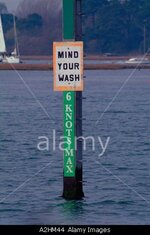Galleon Hunter
Full Member
I just got my manuscript back from the editor with a few small minor corrections and explanations to make.
Question...I have included a river section in my shipwreck book...Does anyone know why vessel speeds on rivers are measured in M.P.H. and vessel speeds on the ocean are measured in knots? I vaguely remember Clive Cussler explaining it in a footnote in one of his books, but can't for the life of me remember which book is was. I looked through the ones I have and could not find the reference.
Can Anybody tell me the answer or what Clive Cussler book the answer might be found in.
Thanks in advance, and Happy Holidays!
Rob
Question...I have included a river section in my shipwreck book...Does anyone know why vessel speeds on rivers are measured in M.P.H. and vessel speeds on the ocean are measured in knots? I vaguely remember Clive Cussler explaining it in a footnote in one of his books, but can't for the life of me remember which book is was. I looked through the ones I have and could not find the reference.
Can Anybody tell me the answer or what Clive Cussler book the answer might be found in.
Thanks in advance, and Happy Holidays!
Rob





